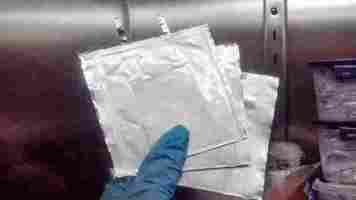Reno claims US first with real-time emissions tracking
This article was originally published by Sarah Wray on Cities Today , the leading news platform on urban mobility and innovation, reaching an international audience of city leaders. For the latest updates, follow Cities Today on Twitter , Facebook , LinkedIn , Instagram , and YouTube , or sign up for Cities Today News.

The City of Reno, Washoe County and the State of Nevada have announced a software partnership to track energy and emissions data in real-time.
They claim Reno is the first city in the country to undertake real-time carbon tracking in line with the standards set by the Intergovernmental Panel on Climate Change (IPCC).
The governments are working with start-up Ledger8760 to use its carbon mapping technology to track hourly, daily and monthly carbon emission data against reduction targets outlined internally and in the Paris Agreement on climate change.
Reno Mayor Hillary Schieve said: “The first phase of the project will provide the City of Reno with an accurate baseline of our emissions in a form that complies with IPCC reporting, establishing the City of Reno as a leader in meeting the transparency aspirations of the Accords.
“The ongoing, real-time data analysis will capture successes to demonstrate the City of Reno’s progress over time toward its mitigation climate goals, while also identifying data-driven practices and opportunities to accelerate its mitigation effort.”
The initiative could serve as a model for other US cities, Schieve said.
Single dashboard
Ledger8760 measures energy, emissions and utility information from thousands of public and proprietary data points. The software will track the Scope 1, Scope 2 and Scope 3 emissions for the City of Reno and Washoe County, as well as energy and emissions from the Nevada State Capitol, Nevada State Legislature, the Nevada Department of Motor Vehicles, and The Nevada Department of Transportation.
“Up until this point, organisations have had limited access to a data set of their emissions and energy usage, and they haven’t been able to see the full picture,” commented Adam Kramer, CEO of Ledger8760. “Through the data sets tracked with Ledger8760, leaders and stakeholders can now have a single dashboard with a full visualisation of their energy and emissions output, along with the related costs, across their organisation that will be both accurate and actionable.”
Heat is on
Reno and Las Vegas have been identified as among the fastest-warming cities in the US by Climate Central, a group of scientists and journalists who research and analyse climate change data. Cities in Nevada have faced extreme heat during the recent US heatwaves.
Reno’s Sustainability and Climate Action Plan sets a goal of reducing greenhouse gas emissions 28 percent by 2025 and 40 percent by 2030, from 2008 levels. The state of Nevada aims to become net zero by 2050.
Nevada Governor Steve Sisolak said: “As we continue to battle drought, diminishing water supplies and wildfires across the West, we are reminded daily of how critical our fight is to slow climate change. If we can accurately measure our impact in real-time, we can more efficiently reduce our carbon output. This is how we fight climate change and protect our state.”
Brainboxes find new way to revive dead lithium-ion batteries
Scientists led by Finland’s Aalto University have a found a way to revive lithium-ion batteries and to facilitate their reuse, pv magazine reports.

The process, called “re-lithiation,” aims tο reverse the gradual loss of lithium which accounts for the battery’s performance loss.
Through an electrolysis process the scientists managed to rejuvenate lithium in battery electrodes, and then compared the performance of the “refreshed” electrodes with those from a brand new battery.
According to the results , the re-lithiation process succeeded, and the capability and recharge capacity of the old battery were almost the same as in brand new ones.
This doesn’t really mean that a revived battery can replace a new one, but that it can potentially reduce the cost and complexity from recycling battery components and materials.
The current methods, which deal with a degraded battery structure, require expensive and energy-consuming processes to separate and purify the materials before they can be reused.
“By reusing the structures of batteries we can avoid a lot of the labor that is common in recycling and potentially save energy at the same time,” explained Aalto University professor Tanja Kallio.
Do EVs excite your electrons? Do ebikes get your wheels spinning? Do self-driving cars get you all charged up?
Then you need the weekly SHIFT newsletter in your life. Click here to sign up .
5 tips to keep your EV safe during cold weather
This article was originally published by Martin Banks on Clean Fleet Report , a publication that gives its readers the information they need to move to cars and trucks with best fuel economy, including electric cars, fuel cells, plug-in hybrids, hybrids and advanced diesel and gasoline engines.

If you own an electric vehicle, you already know your car requires some special care. That’s especially true in the winter months. So how do you keep your EV working correctly?
Here are a few tricks EV owners can use during colder weather.
1. Evaluate tire pressure
It’s crucial to keep an eye on tire pressure in general. This point will be critical when 20-degree days are ahead. Tires can lose 1 pound per square inch every time the outdoor temperature decreases by 10 degrees. That’s why air pressure needs to be a priority.
Keep an air gauge handy, so you can check your car’s tire pressure. It should be obvious when there’s a leak, as your dashboard will show when the tires aren’t holding enough air. Be sure to fill them with your automaker’s recommended amount of pressure.
2. Charge until it’s time to go
EVs don’t usually need to be charged 24/7. It depends on how often the owner drives the car. That’s not true in the winter, however. It’s easy for electric vehicles to lose their charge when the battery gets cold. Therefore, EV owners should remember to keep them plugged into their power source until they leave the house.
3. Drive it frequently
It’s also essential not to leave cars undriven during chilly weather. These temperature decreases can promote issues like corrosion that cause damage to vehicles. If you don’t drive your EV as often throughout the winter, you should try taking it around the block at least once every week.
4. Heat your garage
It can also help to heat your garage. This effort will keep the battery warm, which makes the car charge faster overall. That said, your vehicle might heat the battery automatically. For example, if you have a Tesla Model 3, you can turn on a feature called “climate control” to warm it up. EV owners can expect their vehicles to achieve more range as a result.
5. Expect lower mileage
You should not expect electric cars to operate at their full capacity in winter. Instead, they may only go about half as far as usual before requiring a charge. Many of today’s EVs can get up to around 200 miles before they need to be charged. It’s smart to prepare for half that capacity during colder weather.
Therefore, EV owners should prepare in advance. If you keep your car plugged in between uses, you’ll be able to drive as far as possible. Be sure to map routes that include various charging station options, so you don’t run out of power. It’s also a good idea to heat the car’s interior less often to reserve electricity.
Use these ideas to protect electric cars during winter
EVs have come a long way over the years — but they still require a little extra care to ensure they work their best. That’s primarily true in the winter. Try these tricks to ensure your electric car stays safe during cold days.
You can follow Clean Fleet Report on Twitter and Facebook .
Credit: Clean Fleet
SHIFT is brought to you by Polestar. It’s time to accelerate the shift to sustainable mobility. That is why Polestar combines electric driving with cutting-edge design and thrilling performance. Find out how .